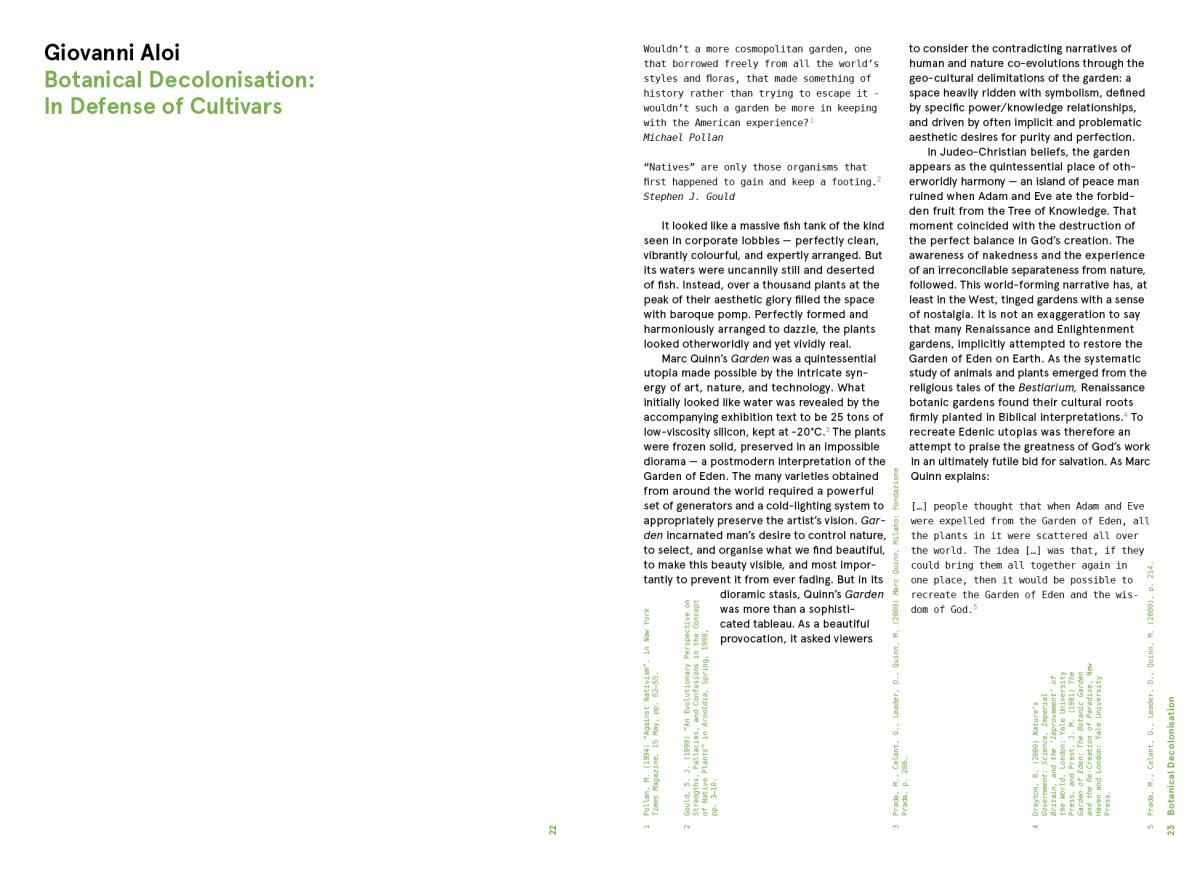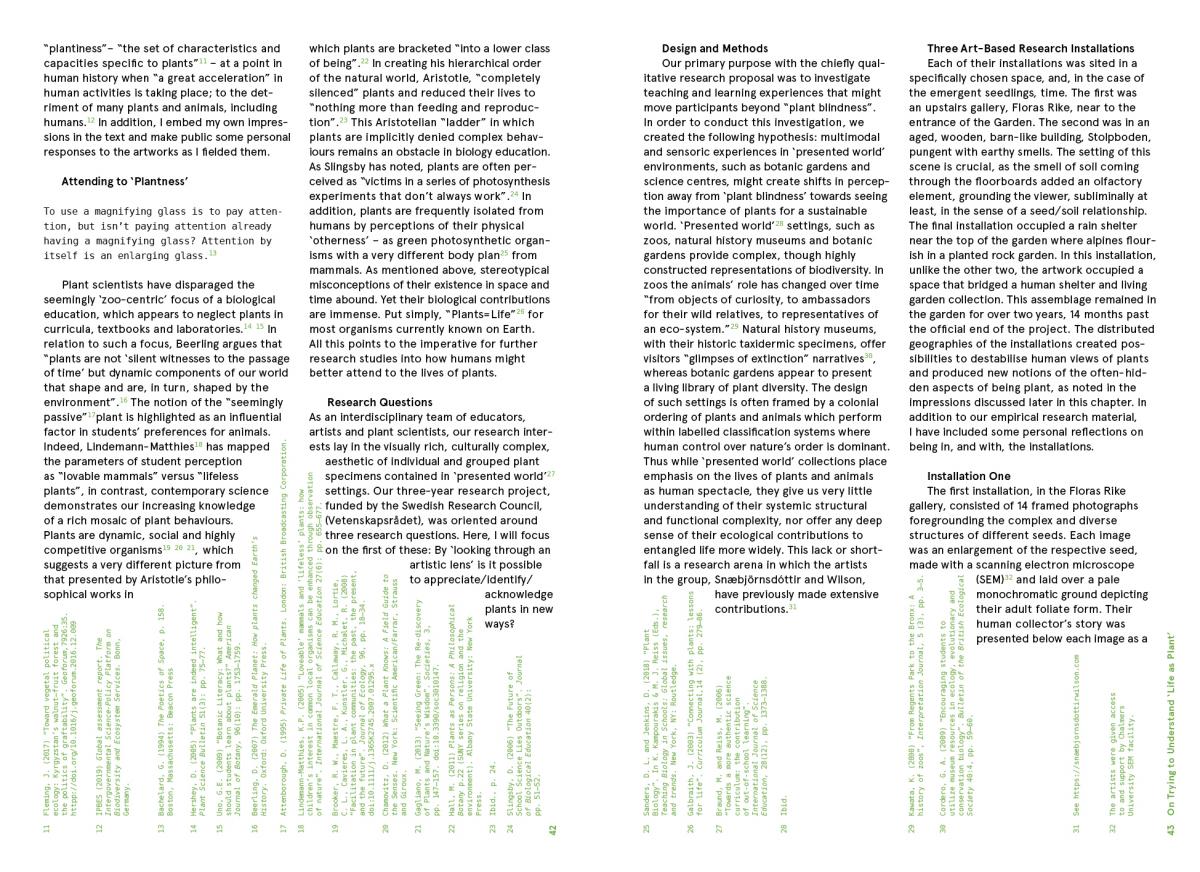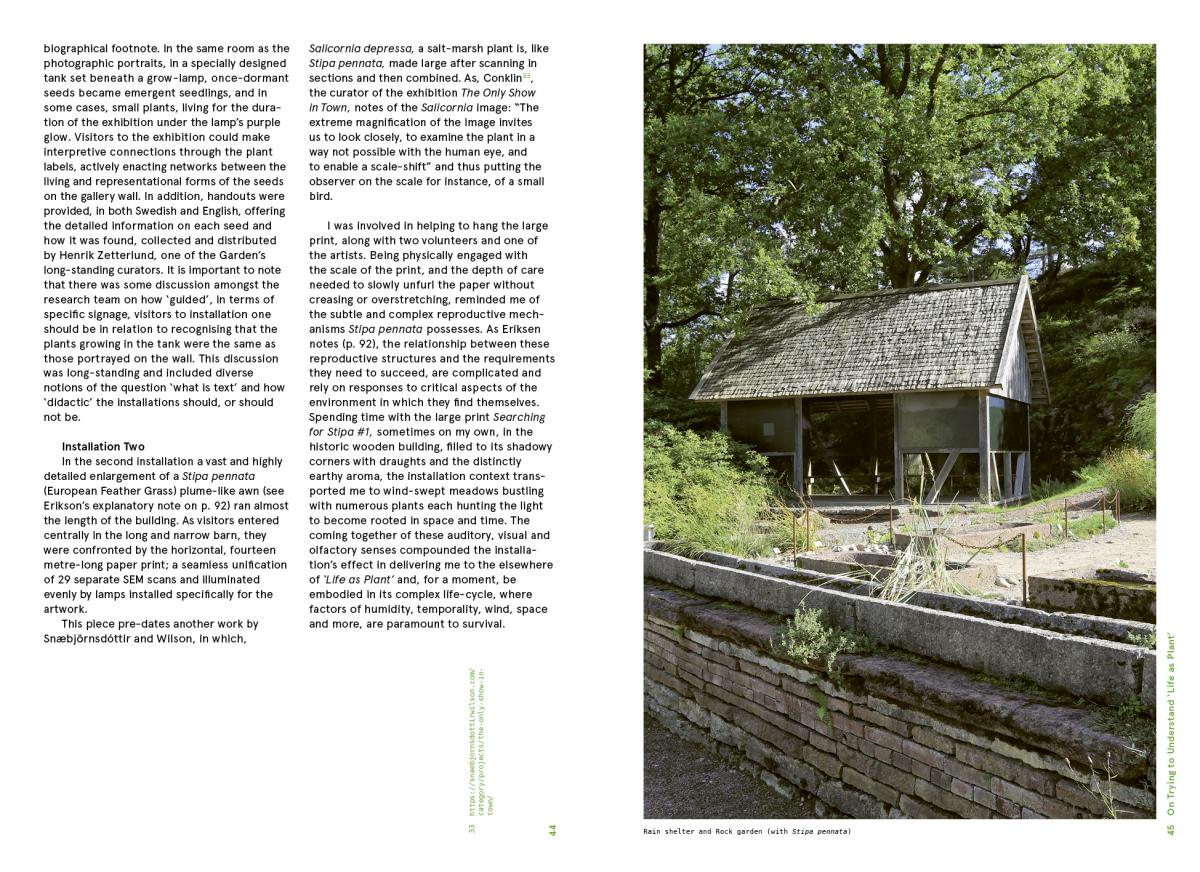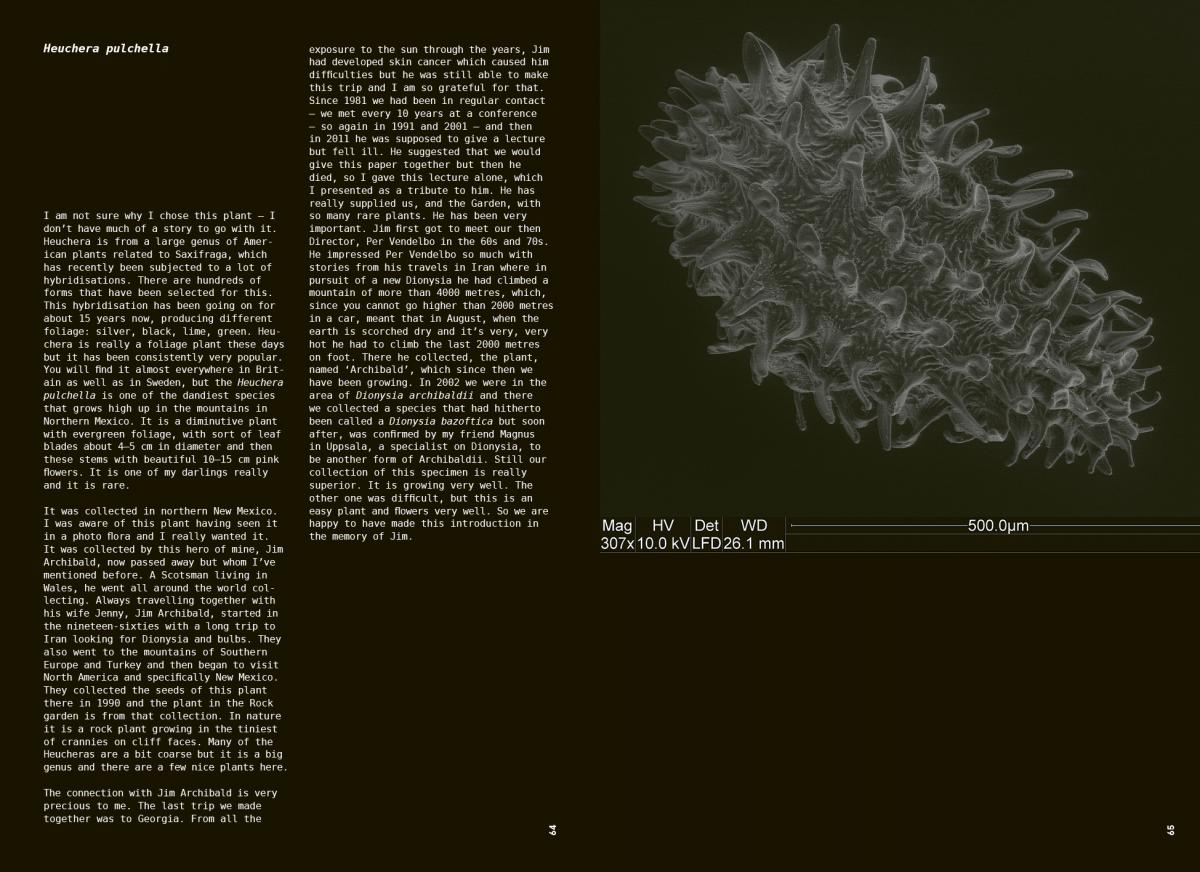Beyond Plant Blindness
The book stems from the pedagogical, art and botanical project of the same name, undertaken between 2015 and 2018 by a core team of researchers – artists Bryndís Snæbjörnsdóttir & Mark Wilson, Dawn Sanders and Eva Nyberg (plant science educators) and Bente Eriksen (botanist).
The team set out to urge a philosophical and actionable move beyond the cultural condition of “plant blindness” and so to disrupt what is a traditional and debilitating human view. Despite the challenges, there is a need for humans to engage conceptually and responsibly with non-human organisms, possessing entirely different physiologies and behaviours. In our engagement with such difference, it is vital that we are not diverted into subjecting plants to human registers and ‘terms of resemblance’, (Houle, 2011) but rather to engage with their ‘plantness’ (Darley, 1990), an approach equating to ‘parities in meeting’ (Snæbjörnsdóttir & Wilson 2010).
Plants live in different temporalities to mammalian life (Sanders, 2019). Consequently, in human perception they can appear still, silent and passive. This is often contingent on the cultural environment in which plants live and the consequently associated narratives. In contemporary city life the complex morphologies and behaviours plants possess are customarily conflated in simplistic terms, such as “house-plant”, “street-tree,” and “food”. These categories speak not at all of the incalculable contributions plants make to the ecological fabric of life on Earth; neither do they acknowledge the complex, temporal and socio-biological systems within which they exist.
Snæbjörnsdóttir & Wilson’s work took multiple forms during the period of the project but was manifest publicly in 2017 as three intervention/installations on as many sites in ‘Botaniska’, the Botanical Gardens in Gothenburg, Sweden. Working closely with plant biologists and plant hunters there, they investigated the far-flung provenances of specific ‘exotic’ plants within the Gardens and explored the historic and mysteriously, local incidence of a soon-to-be-extinct species of grass – together with its extraordinary life cycle.
Authors in the book include Dawn Sanders (plant science educator), Bente Eriksen (botanist), Giovanni Aloi (Editor in Chief of Antennae; The Journal of Nature in Visual Culture), Lynn Turner (Visual Cultures, Goldsmiths), Ramsey Affifi (University of Edinburgh) and Olof Gerdur Sigfúsdóttir (University of Iceland).
In On Trying to Understand Life as Plant, Sanders, writes through an analysis of accumulated data, engaging with student-teacher and public visitor responses to Snæbjörnsdóttir/Wilson’s art interventions in Gothenburg, Botanical Gardens.
Eriksen, in Seeing Significance in Plants: A Role for Art in Botanical Gardens, writes in the context of the Anthropocene and extinction on ‘interpretation’ strategies and methods, through visual means, in the public presentation of plants.
Sigfúsdóttir in Seeing Beyond Science: Art as Epistemic Practice, examines the work of Snæbjörnsdóttir/Wilson, articulating the value and unique contributions to knowledge made possible by research through contemporary art-practice, in its capacity to destabilise and restore.
In a context of anthropology and art, Giovanni Aloi’s Botanical Decolonisation: In Defense of Cultivars, explores and critiques the complexities and contradictions of ‘decolonisation’ in its botanical applications.
In Plant Blindness Leads to Extinction Blindness, Affifi considers what is fatally overlooked by the failure to acknowledge the significance of individual plants in unique, co-constitutive environments.
In her philosophical critique, How Like a (Fig) Leaf, Turner reveals the precarious nature of historical human (male) positionings in a world of vegetal being.
BEYOND PLANT BLINDNESS: Seeing the Importance of Plants for a Sustainable World is edited by Mark Wilson, Bryndís Snæbjörnsdóttir and Dawn Sanders.






